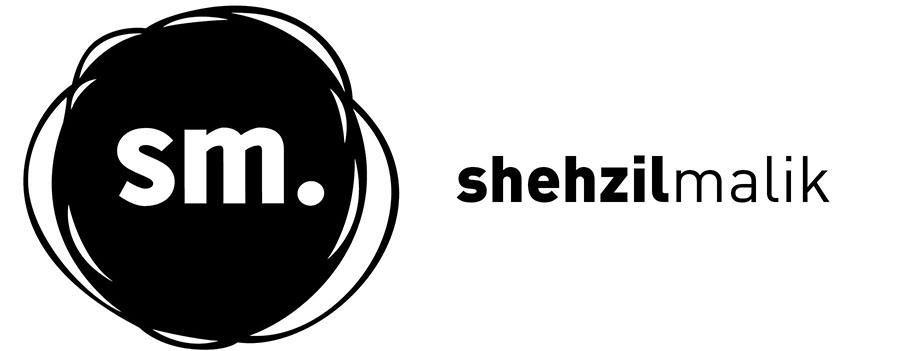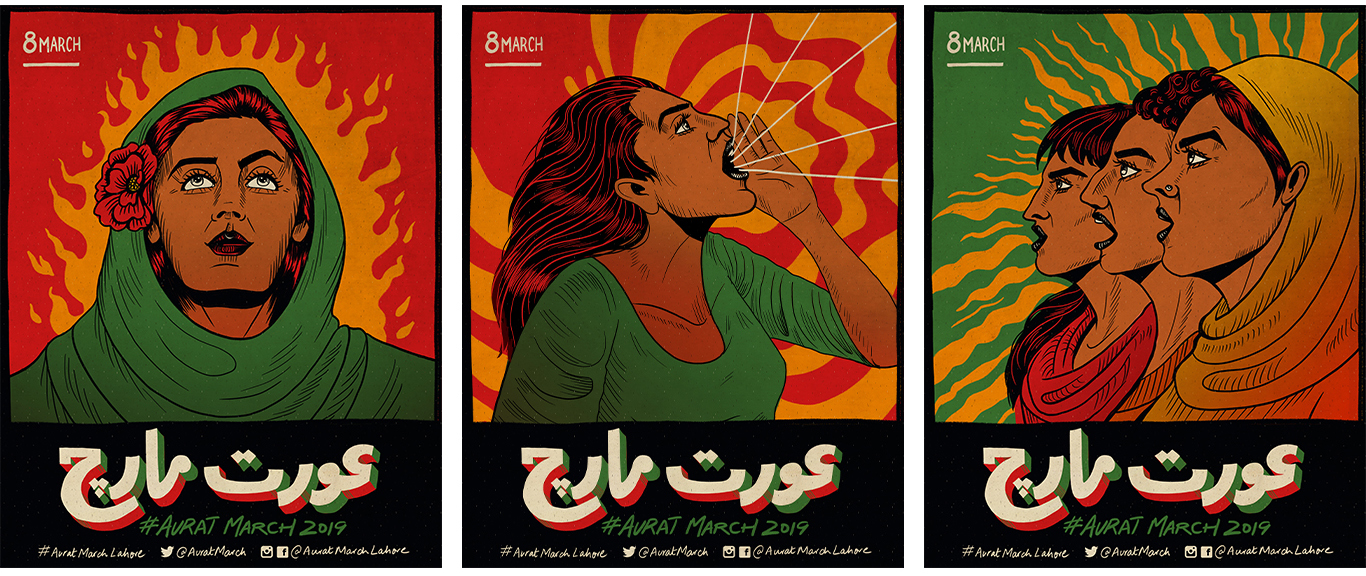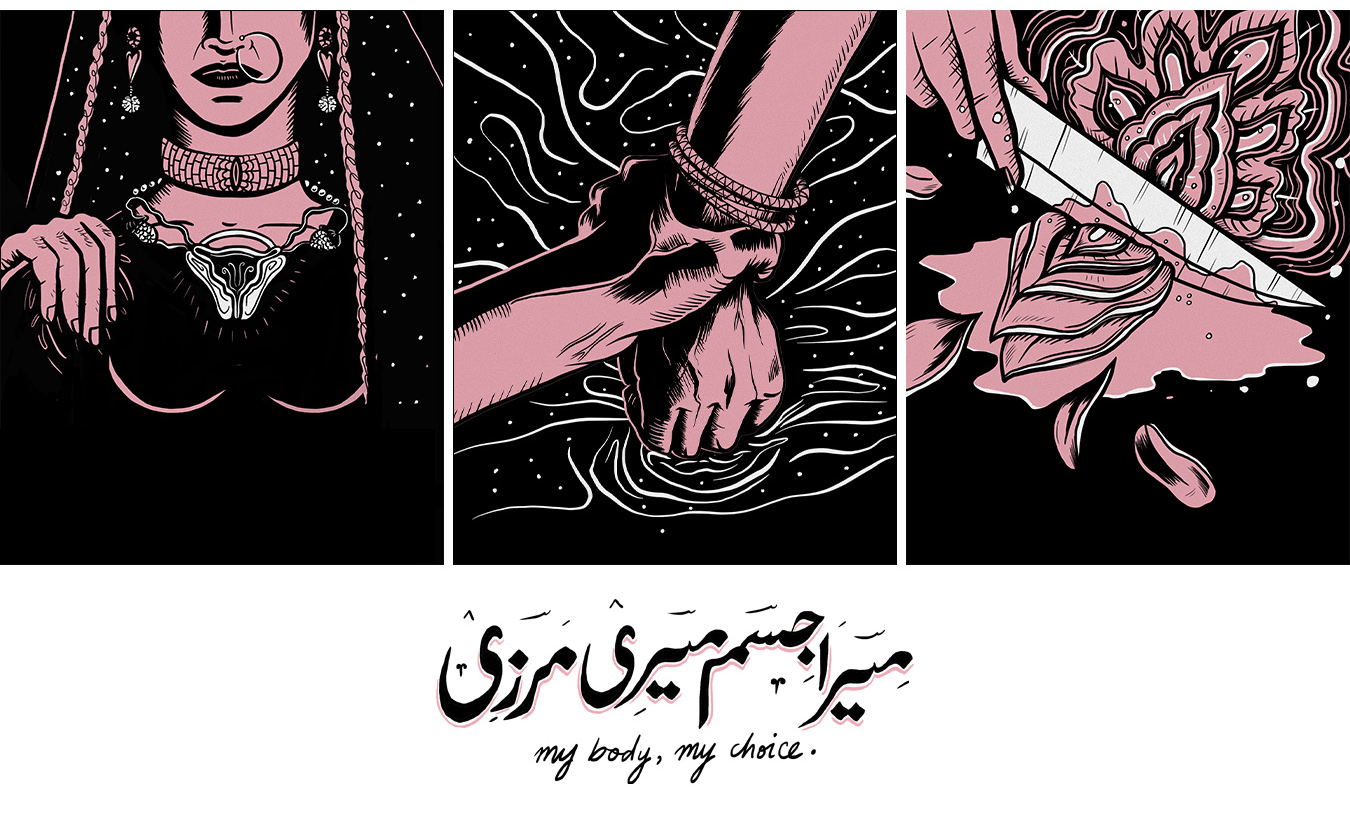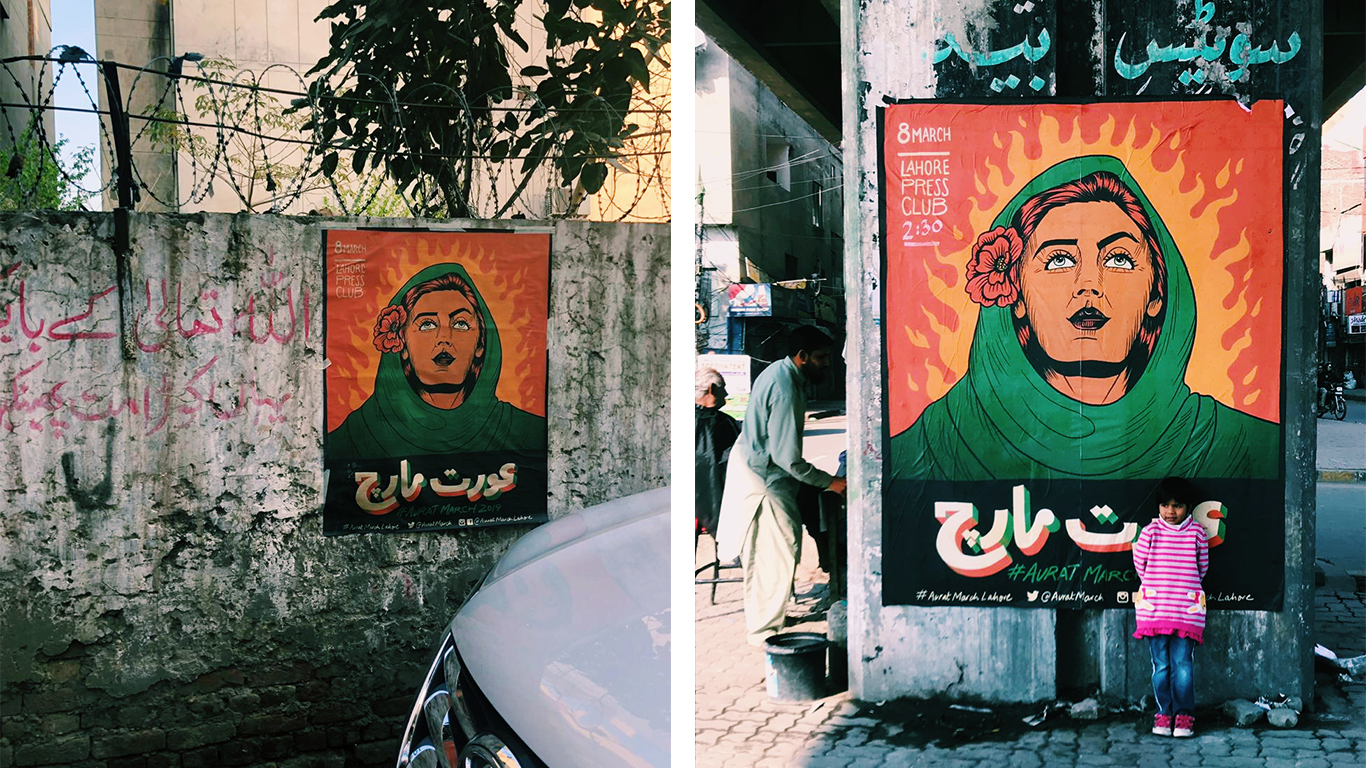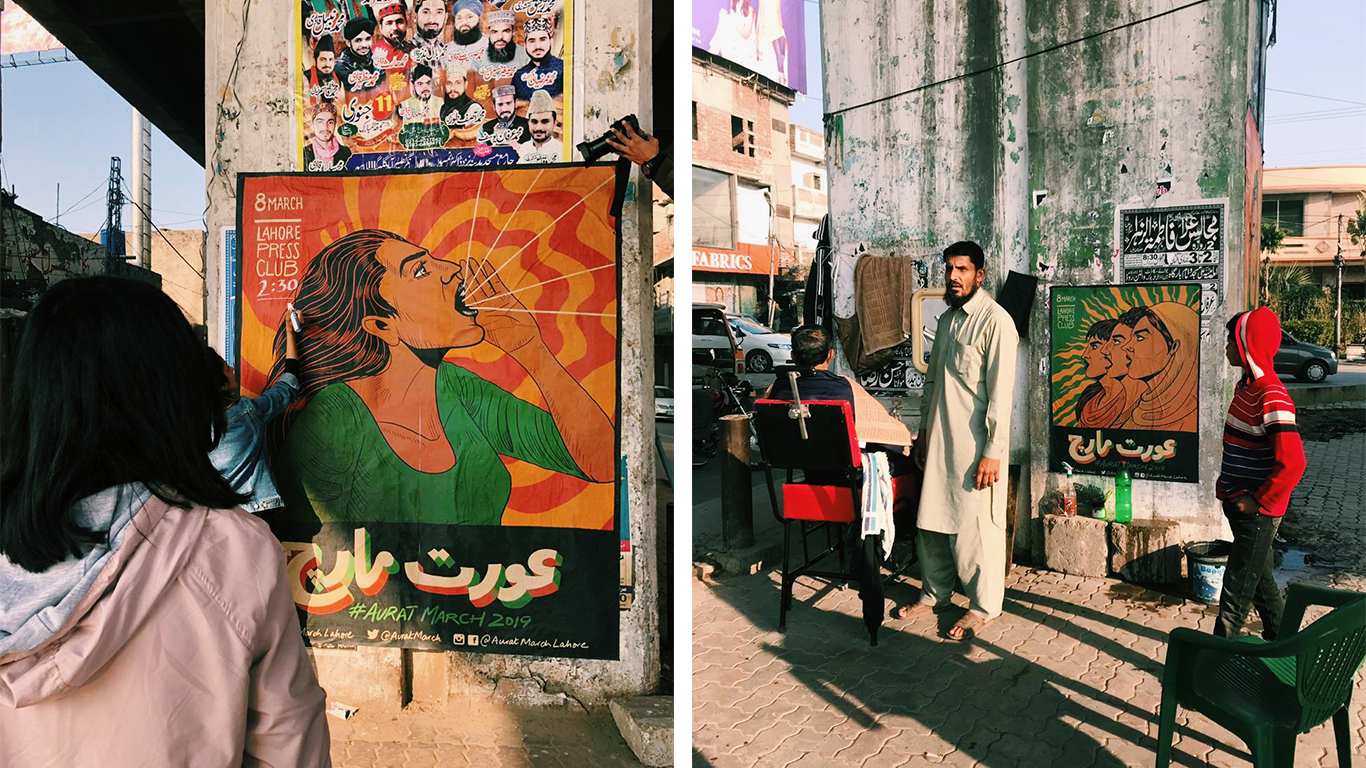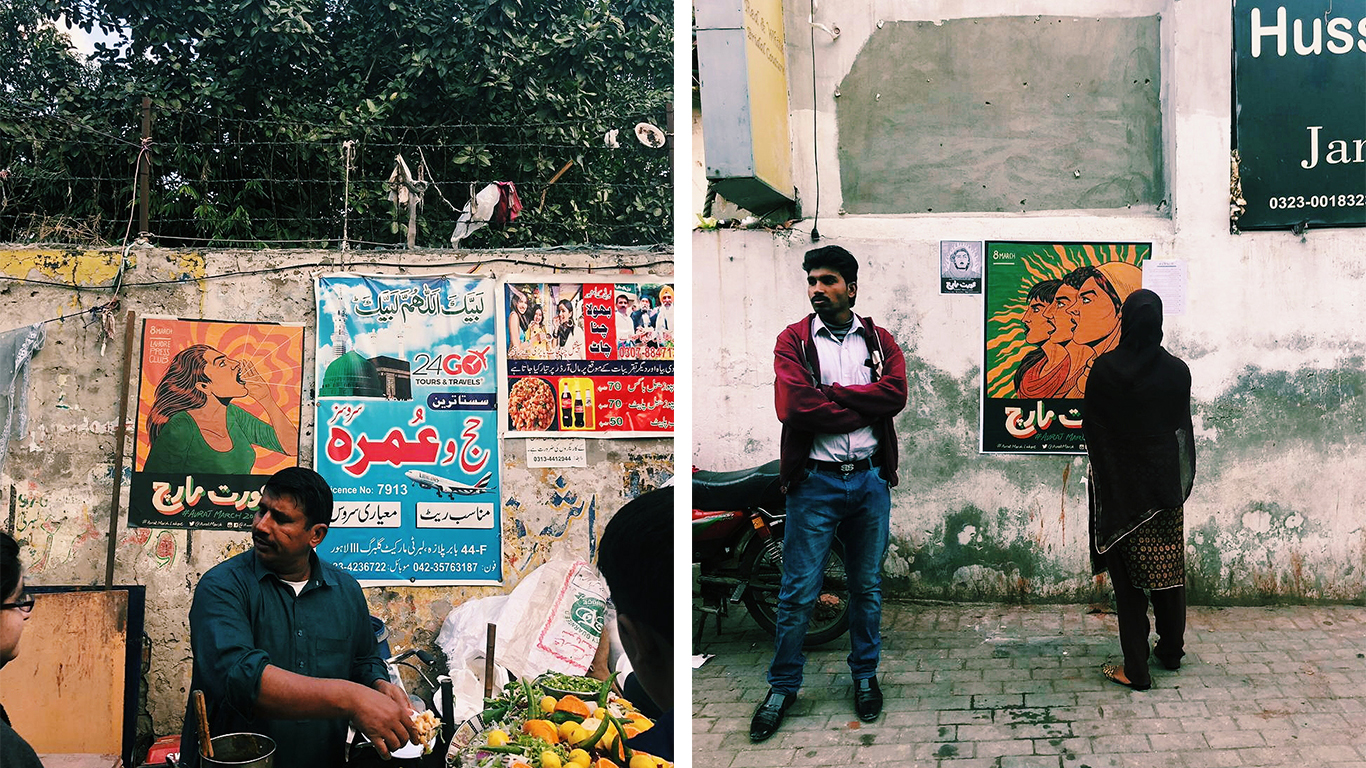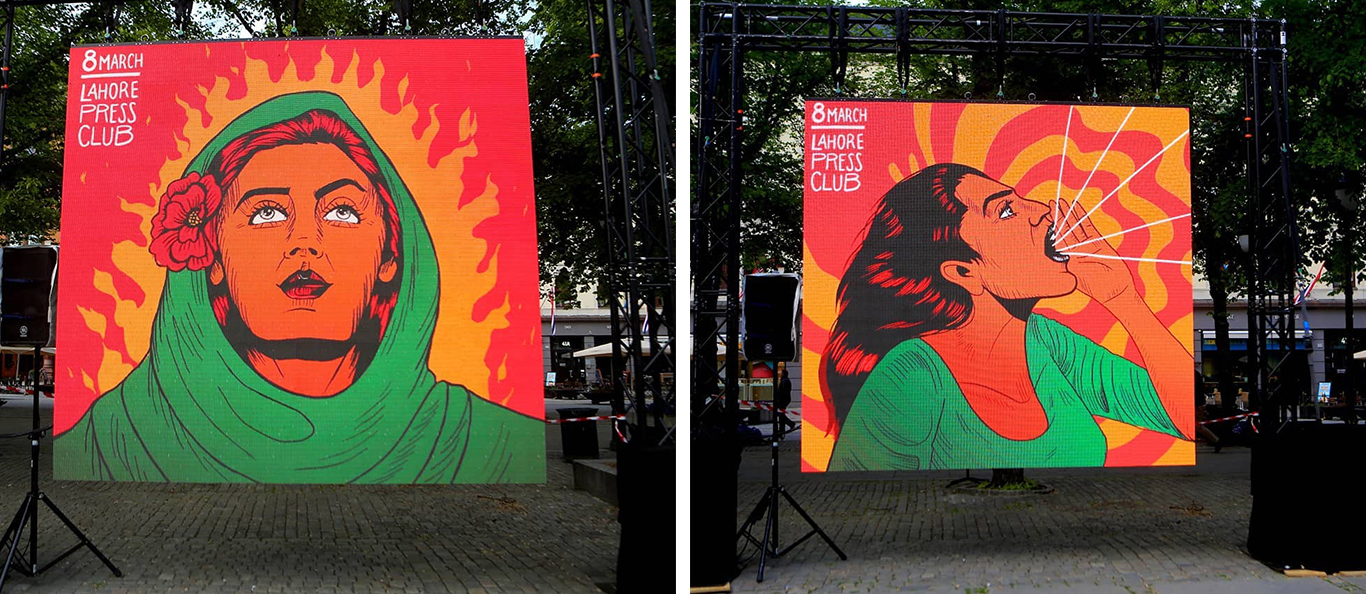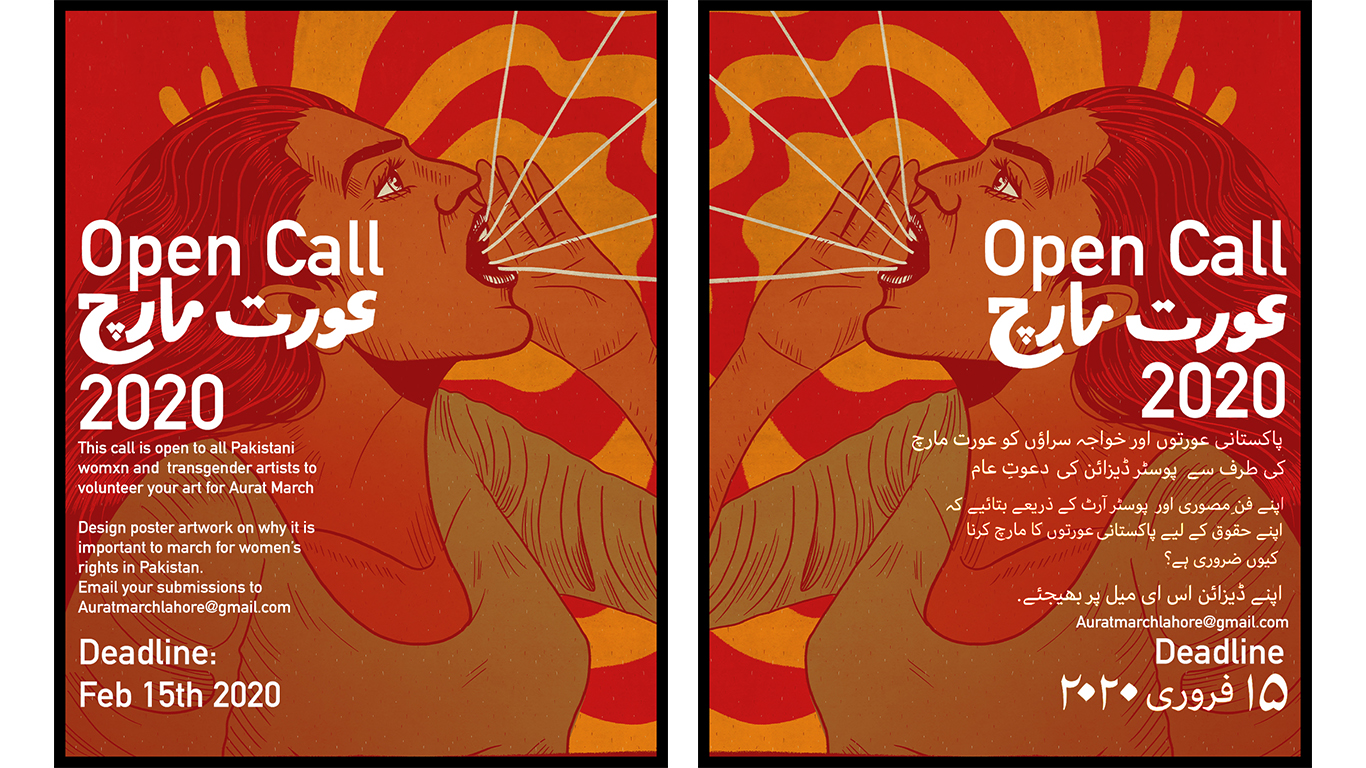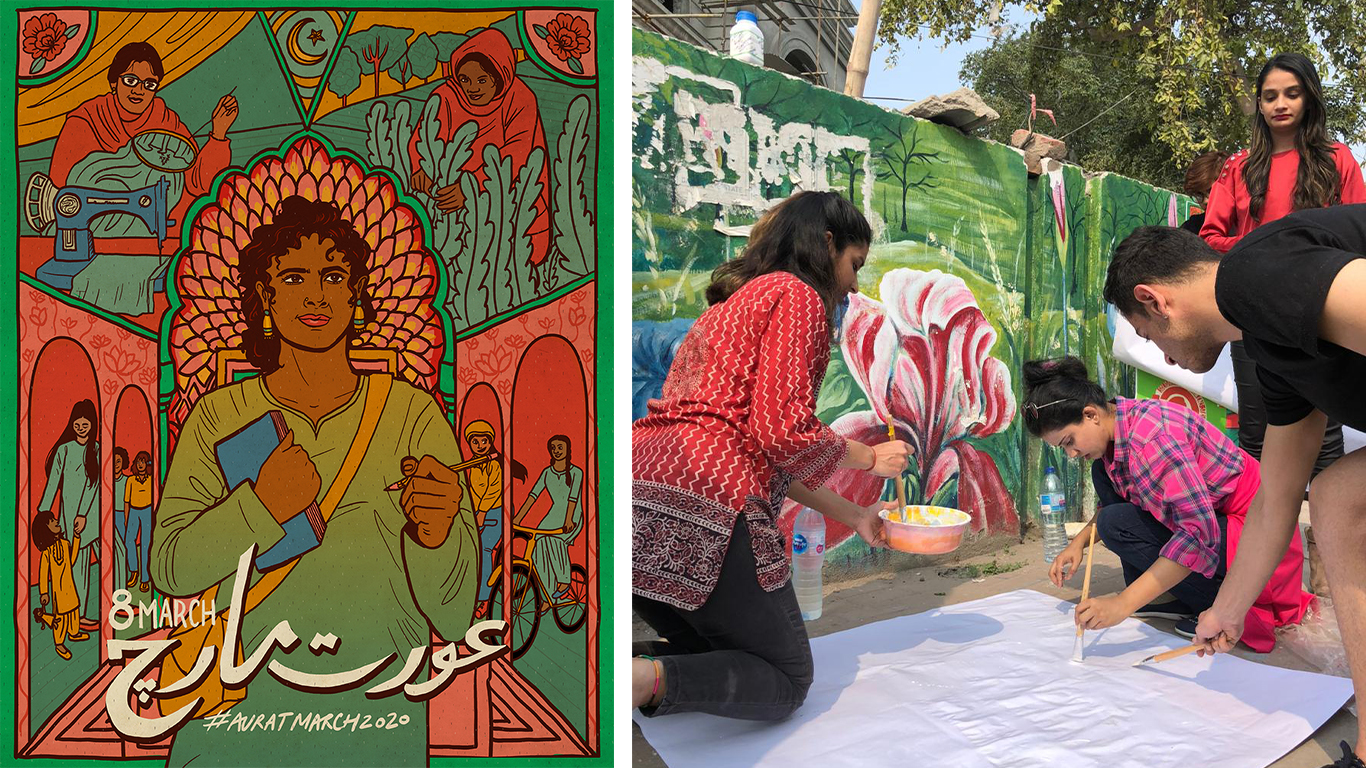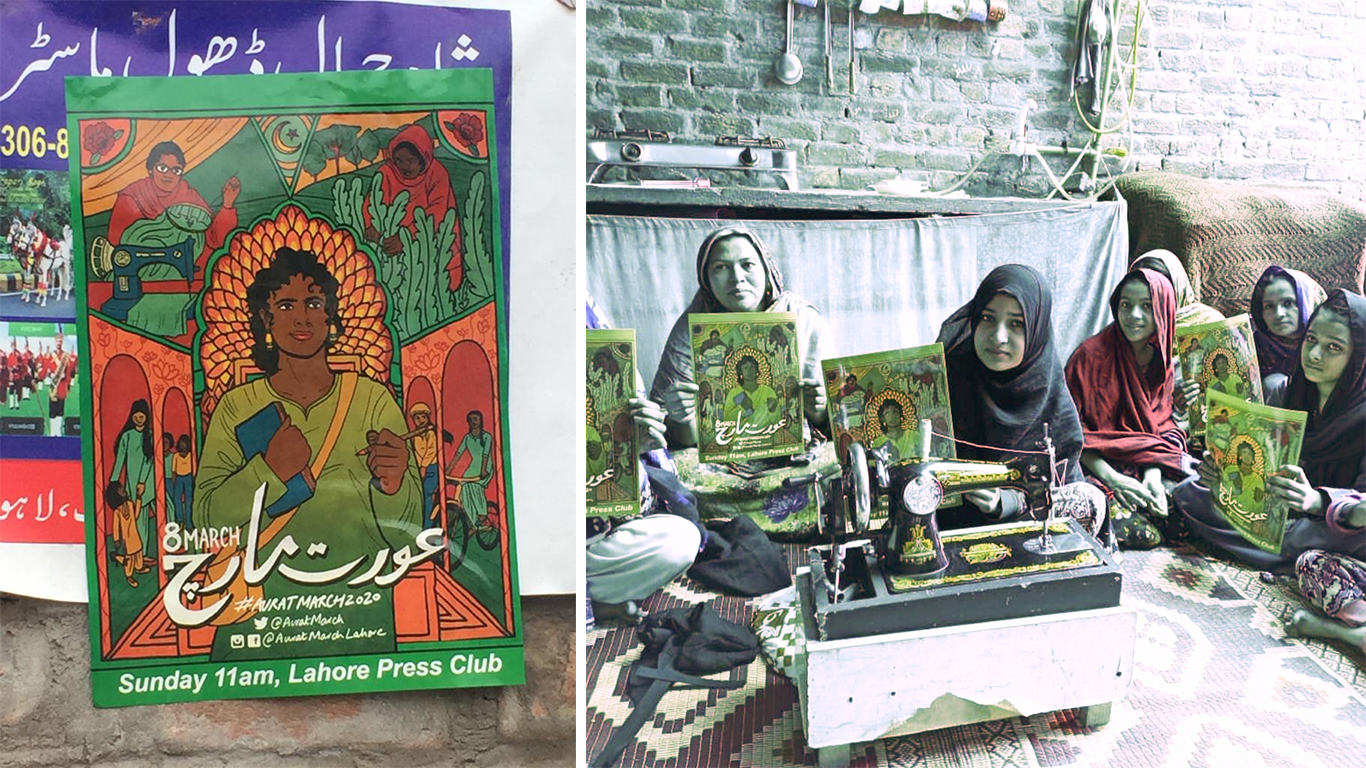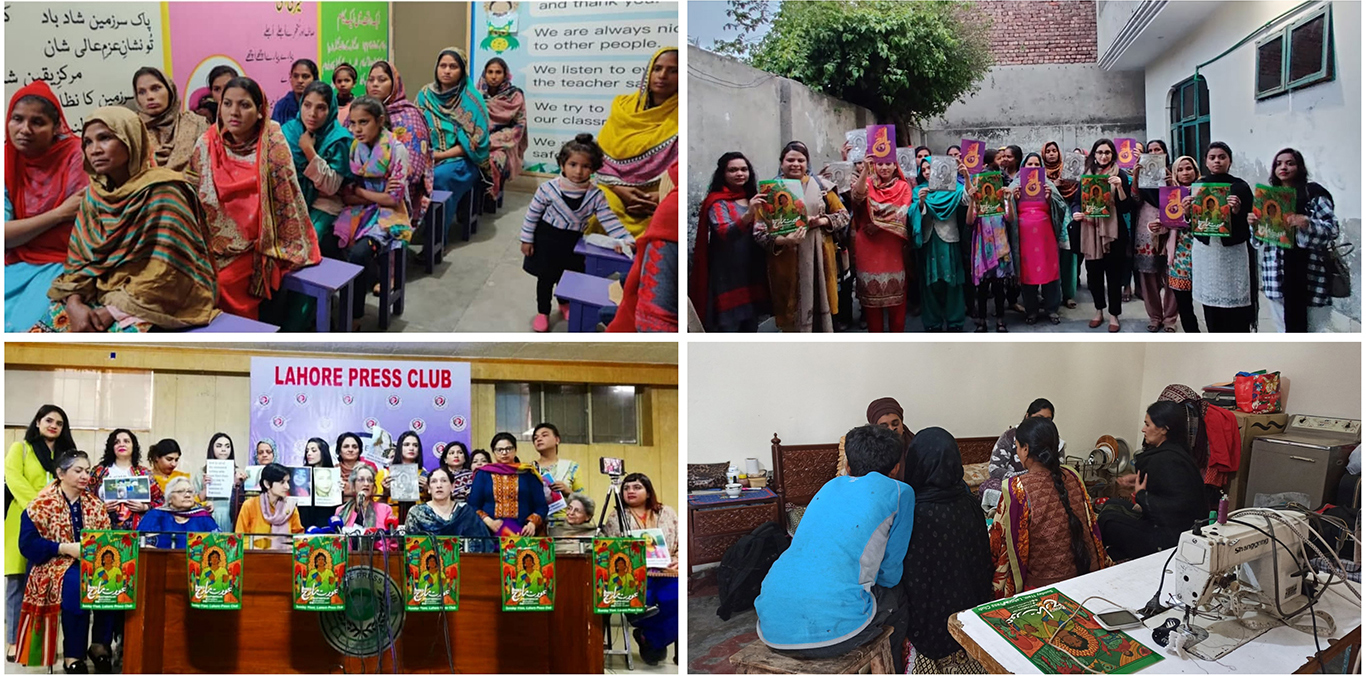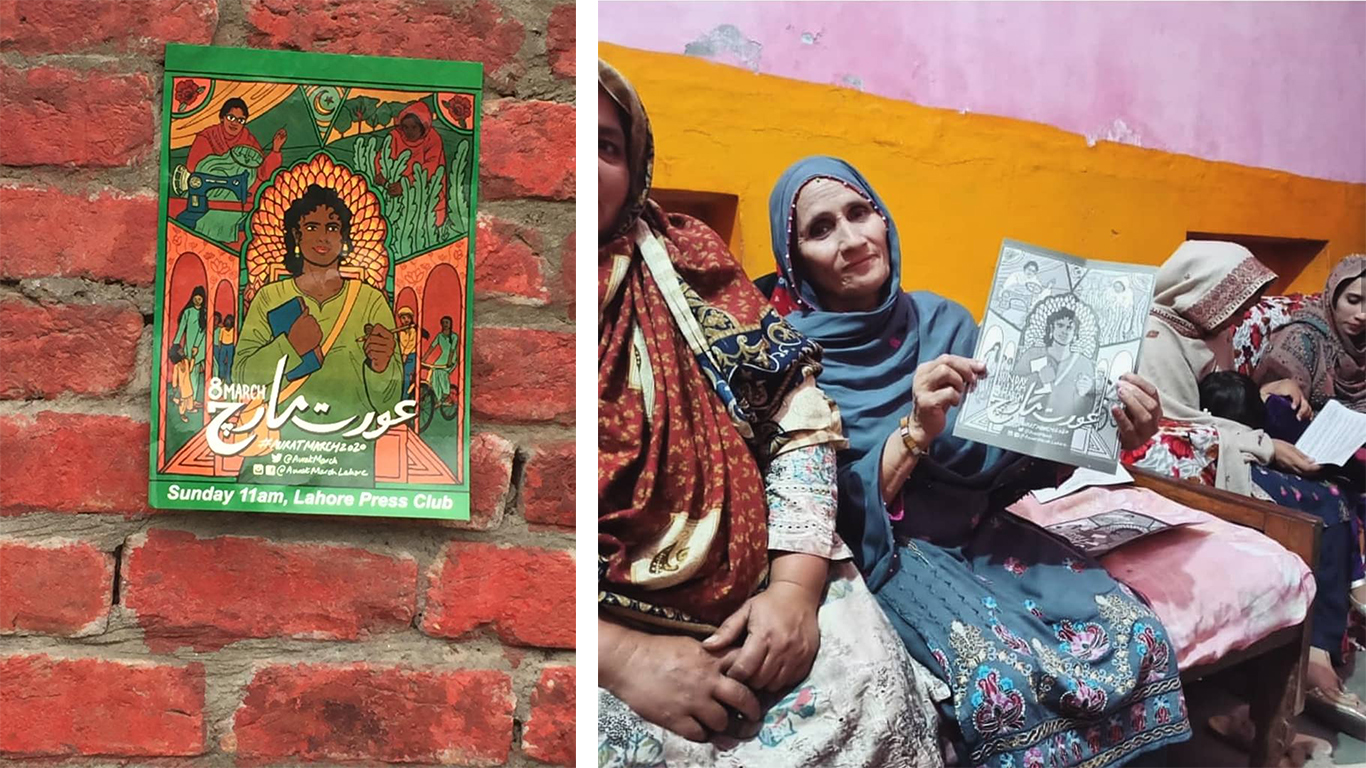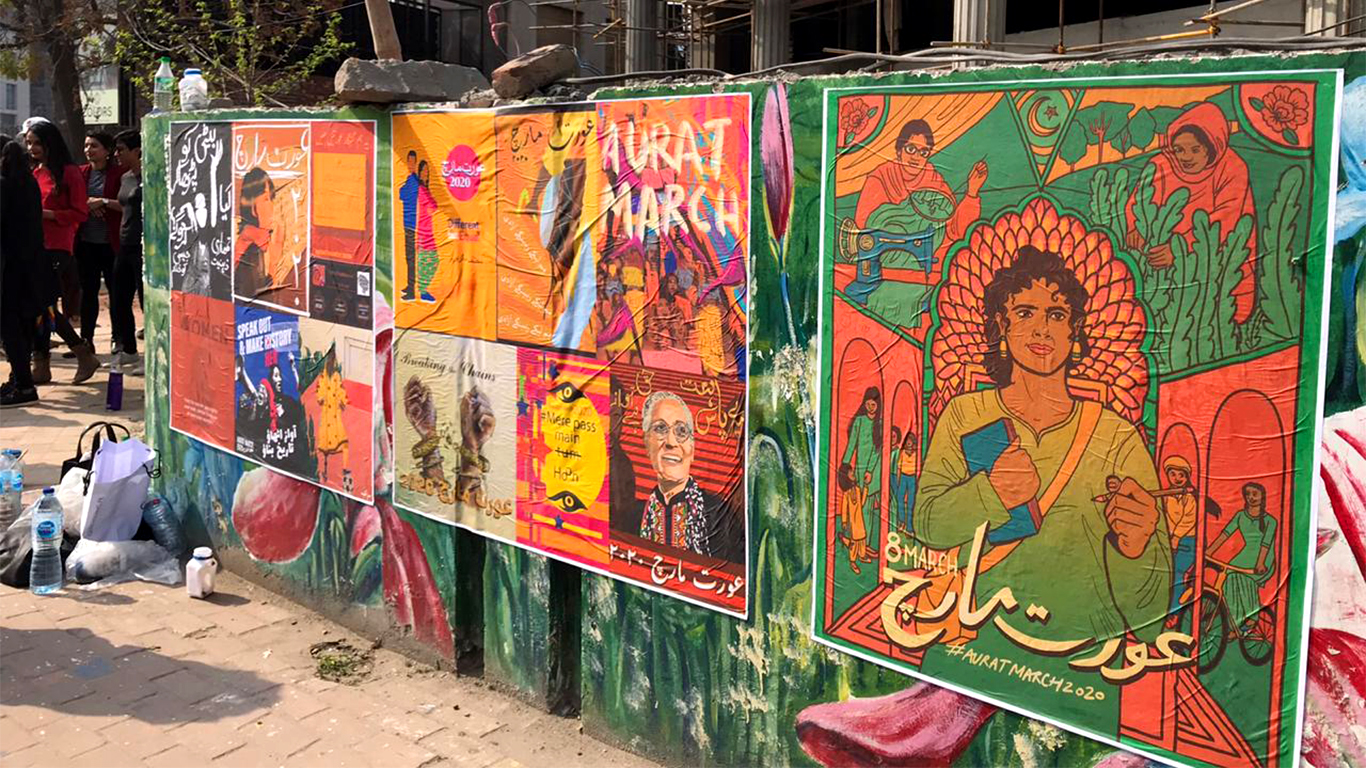The Aurat March (Women’s March) began in 2018 and is now held annually on Women’s Day to raise awareness for women’s rights in Pakistan.
In 2019, Aurat March had marches in Islamabad, Lahore, Karachi, Hunza, Quetta and Hyderabad. Organizations like Women Democratic Front, Women Action Forum, Human Rights Commission of Pakistan, Progressive Students Collective, Domestic Workers Union, Khwaja Sira Society, Home-based Workers Union took part alongside members of civil society. This was a remarkable moment of solidarity for women’s rights.
The dire state of women’s rights and the ubiquity of gender-based violence in Pakistan makes gender inequality an everyday reality for all women. According to the Global Gender Gap Index, Pakistan currently ranks the second lowest in the world for gender equality. Among the seven South Asian countries included in the index, Pakistan is at the very bottom.
In 2020, the march grew bigger. The movement and its aesthetics mark an unprecedented moment for a society as conservative and afraid of women’s bodies as Pakistan. What sets this march apart as compared to historic precedents for the struggle for women’s rights in Pakistan is the accessibility and language used by the movement. It uses art, humor and colloquial language to make the personal political. Through witty and fearless slogans and placards held by marchers, it does the unthinkable by poking fun at the patriarchy. But while the march grows in popularity, so does its opposition. Despite the threats and vitriol, the women volunteers, activists and organizers soldier on. These women inspire me and I am honored to draw for a cause so close to my heart.
You can find news reports on Aurat March on the Press page. You can follow Aurat March Lahore on their official accounts: Aurat March on Facebook, Aurat March on Instagram.
